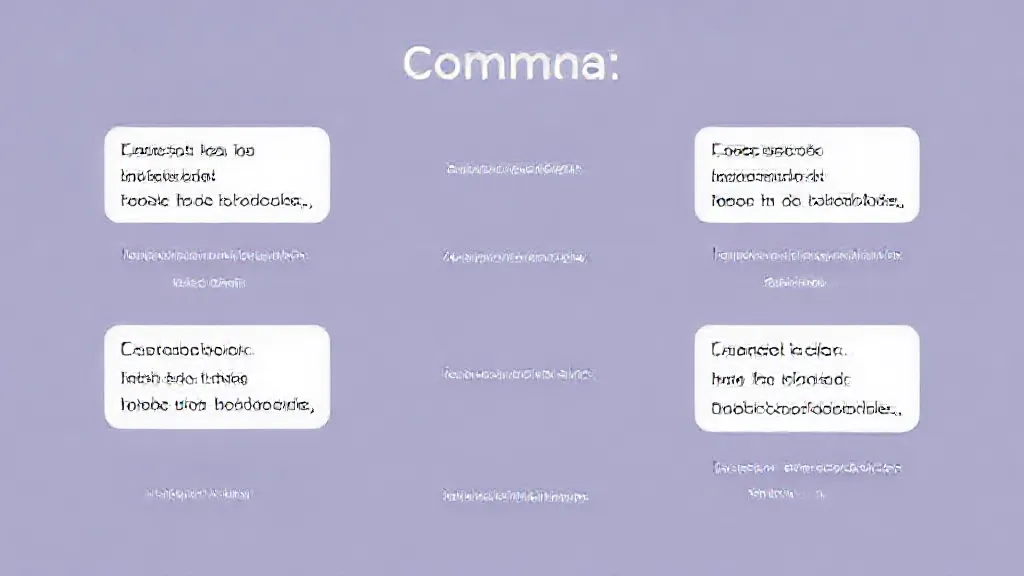Commas are one of the most frequently used punctuation marks in the English language, yet their proper placement can often confuse writers. Understanding where to place commas in sentences is crucial for clarity and coherence in writing. This article aims to provide a comprehensive guide to comma usage, exploring various rules, examples, and common pitfalls to avoid.
The Importance of Commas in Writing
Commas serve several important functions in writing. They help to separate elements in a list, clarify sentence structure, and indicate pauses in speech. Without commas, sentences can become ambiguous or difficult to read.
For instance, consider the difference between "Let's eat, Grandma!" and "Let's eat Grandma!" The first sentence invites Grandma to eat, while the second suggests a rather alarming alternative. Such examples underscore the importance of correct comma placement.
Basic Rules for Comma Usage
There are several fundamental rules for comma usage that every writer should know.
One of the most common uses of commas is to separate items in a series. For example, in the sentence "I bought apples, oranges, bananas, and grapes," commas clearly delineate the different items. Additionally, commas should be used before conjunctions like 'and,' 'but,' and 'or' when they join two independent clauses, as in "I wanted to go for a walk, but it started to rain.
"
Using Commas with Introductory Elements
Another critical area for comma placement is with introductory phrases or clauses. When a sentence begins with an introductory element, a comma is typically used to separate it from the main clause. For example, "After the meeting, we went out for lunch.
" This comma indicates a pause and helps the reader understand the structure of the sentence. However, it is important to note that if the introductory element is very short, such as a single word or a brief phrase, the comma may be omitted.
Commas in Complex Sentences
In complex sentences, commas can help clarify relationships between clauses.
For instance, in the sentence "Although it was raining, we decided to go for a hike," the comma before 'we' indicates a pause that reflects the contrast presented by the introductory clause. Commas are also essential in separating non-essential clauses, which provide additional information but can be removed without altering the sentence's fundamental meaning. For example, "My brother, who lives in New York, is visiting us next week" uses commas to set off the non-essential clause "who lives in New York.
"
Common Comma Misuses to Avoid
Despite their importance, commas are often misused. One common mistake is the comma splice, which occurs when two independent clauses are joined by a comma without a coordinating conjunction. For example, "I love to read, I have many books" should be corrected to "I love to read; I have many books" or "I love to read, and I have many books.
" Another frequent error is overusing commas, particularly in short sentences where they are unnecessary. Writers should strive for clarity and avoid cluttering sentences with excessive punctuation.
The Oxford Comma Debate
The Oxford comma, also known as the serial comma, is a contentious topic among writers and grammarians.
This comma is placed before the conjunction in a list of three or more items, as in "I love my parents, Lady Gaga, and Humpty Dumpty." Proponents argue that it prevents ambiguity, while opponents claim it is often unnecessary. Ultimately, the choice to use the Oxford comma may depend on the style guide being followed, but understanding its implications is essential for effective writing.
Commas in Direct Address and Appositives
Commas are also crucial in sentences that involve direct address or appositives. When directly addressing someone, a comma is used to separate the name from the rest of the sentence, as in "Can you help me, Sarah?" Similarly, appositives, which provide additional information about a noun, should be set off by commas. For example, "My dog, a golden retriever, loves to play fetch.
" These uses highlight the versatility of commas in enhancing sentence clarity.
Conclusion: Mastering Comma Placement
Mastering the placement of commas is essential for anyone looking to improve their writing skills. By understanding the various rules and contexts in which commas are used, writers can enhance the clarity and effectiveness of their communication.
Regular practice, along with careful proofreading, will help ensure that comma usage becomes second nature. For further learning, writers can refer to style guides such as The Chicago Manual of Style or the MLA Handbook, which provide detailed guidance on punctuation and grammar.
